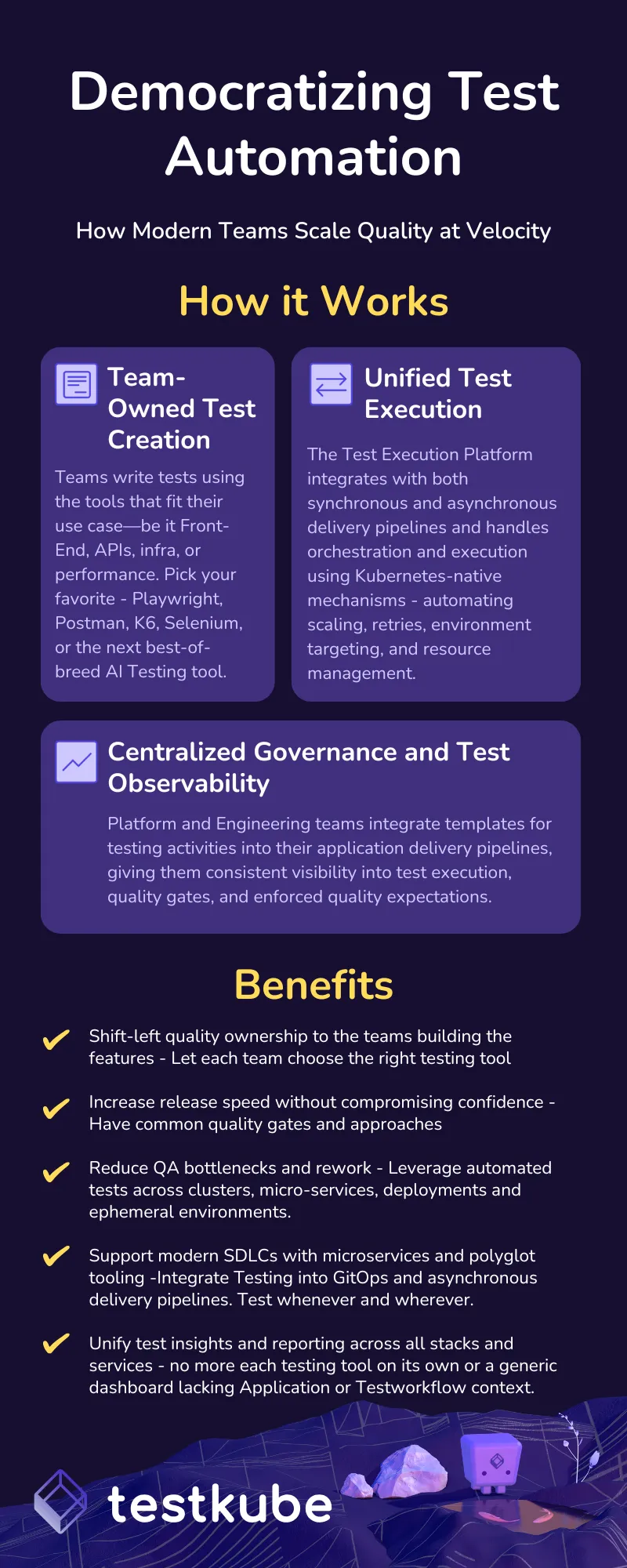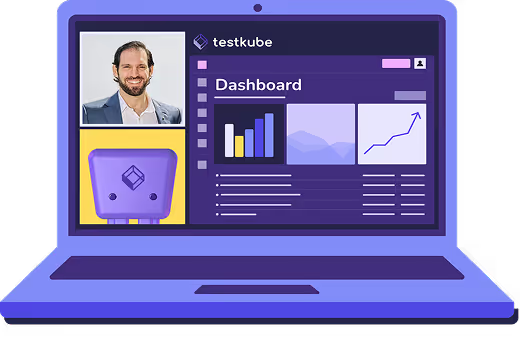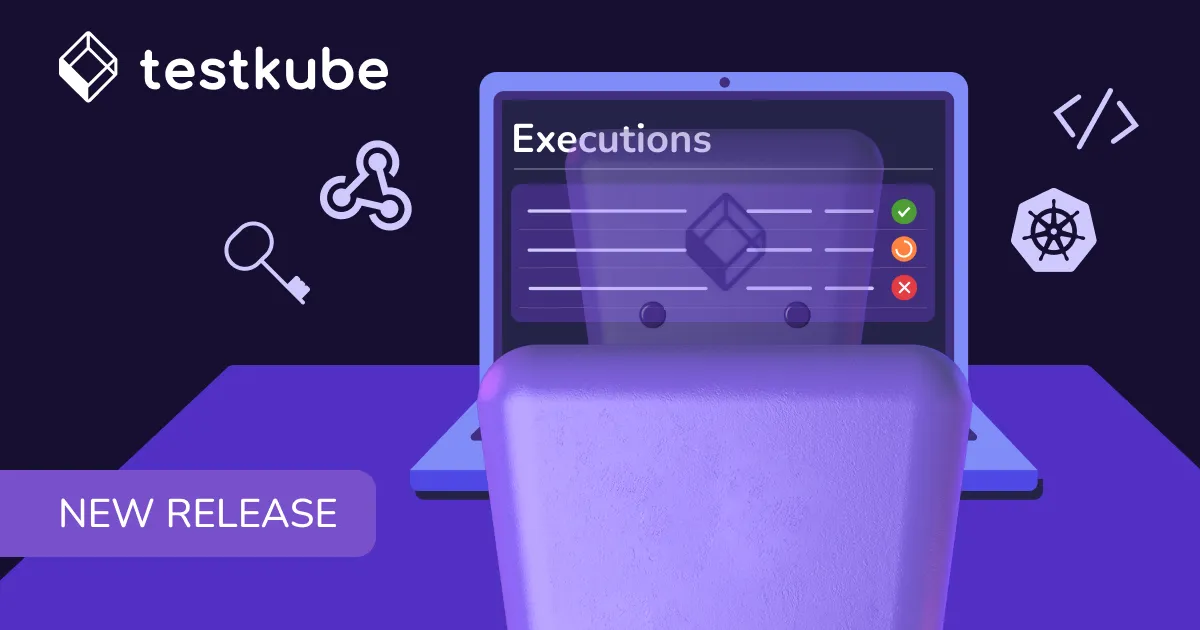Table of Contents
Try Testkube instantly in our sandbox. No setup needed.
Try Testkube instantly in our sandbox. No setup needed.




Table of Contents
Executive Summary
After spending 20+ years scaling engineering teams and watching organizations grow from the chaos that comes with startups to the complexity that comes with enterprise, I've seen the same testing challenges play out again and again.
Most teams end up stuck between two imperfect approaches: either a centralized QA team that becomes a bottleneck, or complete testing autonomy where consistency goes out the window. Neither scales well for modern distributed systems.
The answer lies not in choosing between the two, but in democratizing test automation through a platform-first approach that empowers every team while maintaining organizational governance. Just as we've democratized deployment, monitoring, and security through platform engineering, it's time to do the same for testing.
The Challenge
Modern software delivery has evolved rapidly. Applications have more and more microservices, APIs, and require more internal and external Load testing. Infrastructure is now programmable. Features ship faster. Teams are increasingly autonomous. With the advent of AI producing software is becoming easier and easier. However, quantity does not mean quality. How do we ensure that testing software does not lag far behind?
Many of us are familiar with the two ends of the spectrum:
Test Autocracy
A centralized Quality team is responsible for: quality gates, test creation, execution, scheduling, debugging, Go/No Go decision. They work with respective DevOps or Platform teams and provide support for Devs. This model creates bottlenecks and ultimately slows velocity
- Developers are distanced from the testing process.
- Testers are distanced from the development process.
- Quality gates slow down release cycles.
- Bugs are caught too late in the development lifecycle.
- Cross-functional collaboration suffers.
Test Anarchy
Testing becomes everyone’s and no one’s responsibility. This is the undesired outcome of a “shift-left” initiative. Developers and teams build their own tests - or skip testing altogether. “Just ship” or “we test in production” is a valid approach for some teams, such as small startups or where the business has a high tolerance for software failure. While this may allow for high velocity, the organization has to accept
- Inconsistent approach to testing and quality.
- Poor visibility into test coverage and results.
- Lack of traceability, transparency, and governance.
- Increased risk of regressions and production failures.
For modern, distributed, Kubernetes-native applications composed of dozens or hundreds of microservices, neither model can scale effectively. The testing function itself must be reimagined to meet the needs of today’s software teams.
Rethinking Testing for Modern Software
Testing can no longer be treated as a phase at the end of development or prior to a deployment. It must evolve into a continuous, collaborative, and embedded discipline - integrated directly into the software development lifecycle (SDLC) and into the core of a platform.
Modern development teams require:
- Autonomy: The ability to test where and how they build.
- Orchestration: A unified system for executing, observing, and managing tests.
- Governance: Organizational visibility without micromanagement.
- Alignment with CI/CD: Seamless integration into workflows, environments, and toolchains.
- Consistency: Tests need to run using a consistent environment and tooling for 100% reliability on testing results.
To support this shift, testing must become a core function of the internal developer platform, just like observability, deployment automation, and security.
This requires treating testing not as a checklist item, but as an integral function of the internal platform alongside observability, deployment, and security.
Solution: Test Democratization Platform
Decoupling Test Execution from traditional CI/CD pipelines by providing a universal test orchestration and test observability platform, regardless of testing tool, team, or environment, makes testing infectious across an organization. This platform-first approach enables every team to own and drive their part of the testing and delivery process faster, better, and more cost-efficiently.
Teams gain freedom without sacrificing accountability by becoming both:
Enabled
- Developers use the best testing tools for their domain (e.g., Playwright for front-end, Postman for APIs, K6 for performance, custom scripts for infrastructure testing).
- Execution scales across clusters, namespaces, geographies, or LLMs (public or private)
- CI/CD pipelines and GitOps workflows integrate seamlessly (GitHub Actions, Jenkins, Argo, etc.)
- Test orchestration is standardized. In case of Cloud-native applications using Kubernetes-native constructs (CRDs, Jobs)
Empowered
- Through a shared framework for test orchestration, providing execution, visibility, and historical analysis for continuous improvement.
How It Works
The solution operates through a simple yet powerful model that puts teams in control while maintaining enterprise-grade oversight.

Team-Owned Test Creation
Teams write tests using the tools that fit their use case—be it Front-End, APIs, infra, or performance. Pick your favorite - Playwright, Postman, K6, Selenium, or the next best-of-breed AI Testing tool.
Unified Test Execution:
The Test Execution Platform integrates with both synchronous and asynchronous delivery pipelines and handles orchestration and execution using Kubernetes-native mechanisms - automating scaling, retries, environment targeting, and resource management.
Centralized Governance and Test Observability
Platform and Engineering teams integrate templates for testing activities into their application delivery pipelines, giving them consistent visibility into test execution, quality gates, and enforced quality expectations.
Benefits
- Shift-left quality ownership to the teams building the features - Let each team choose the right testing tool
- Increase release speed without compromising confidence - Have common quality gates and approaches
- Reduce QA bottlenecks and rework - Leverage automated tests across clusters, micro-services, deployments and ephemeral environments.
- Support modern SDLCs with microservices and polyglot tooling -Integrate Testing into GitOps and asynchronous delivery pipelines. Test whenever and wherever.
- Unify test insights and reporting across all stacks and services - no more each testing tool on its own or a generic dashboard lacking Application or Testworkflow context.
Real-World Impact
Here is what some of the users say who adopt this approach:
Conclusion: Testing as a First-Class Platform Capability
In today’s complex environments, testing must be flexible and evolve from a QA-owned gatekeeping function to a team-owned, platform-enabled, and organization-visible Quality Engineering practice.
A modern Cloud-native testing platform allows teams to build, own, and run tests independently, while having consistency, leverage, and collaboration across the teams.


About Testkube
Testkube is a cloud-native continuous testing platform for Kubernetes. It runs tests directly in your clusters, works with any CI/CD system, and supports every testing tool your team uses. By removing CI/CD bottlenecks, Testkube helps teams ship faster with confidence.
Explore the sandbox to see Testkube in action.



.webp)


